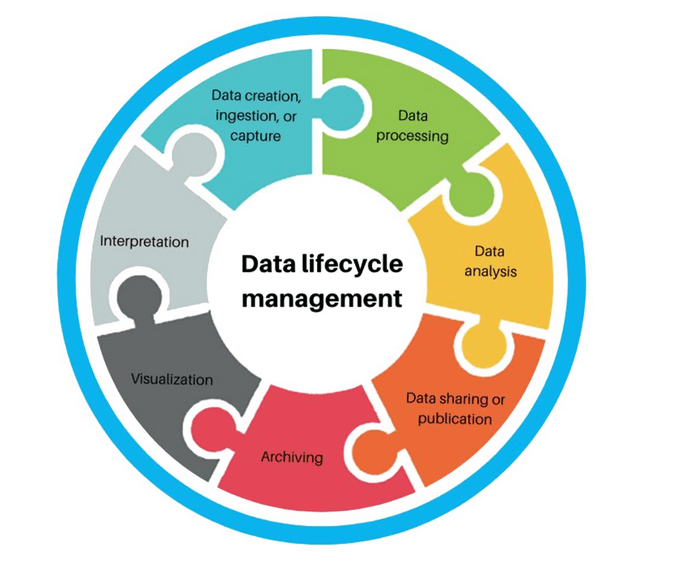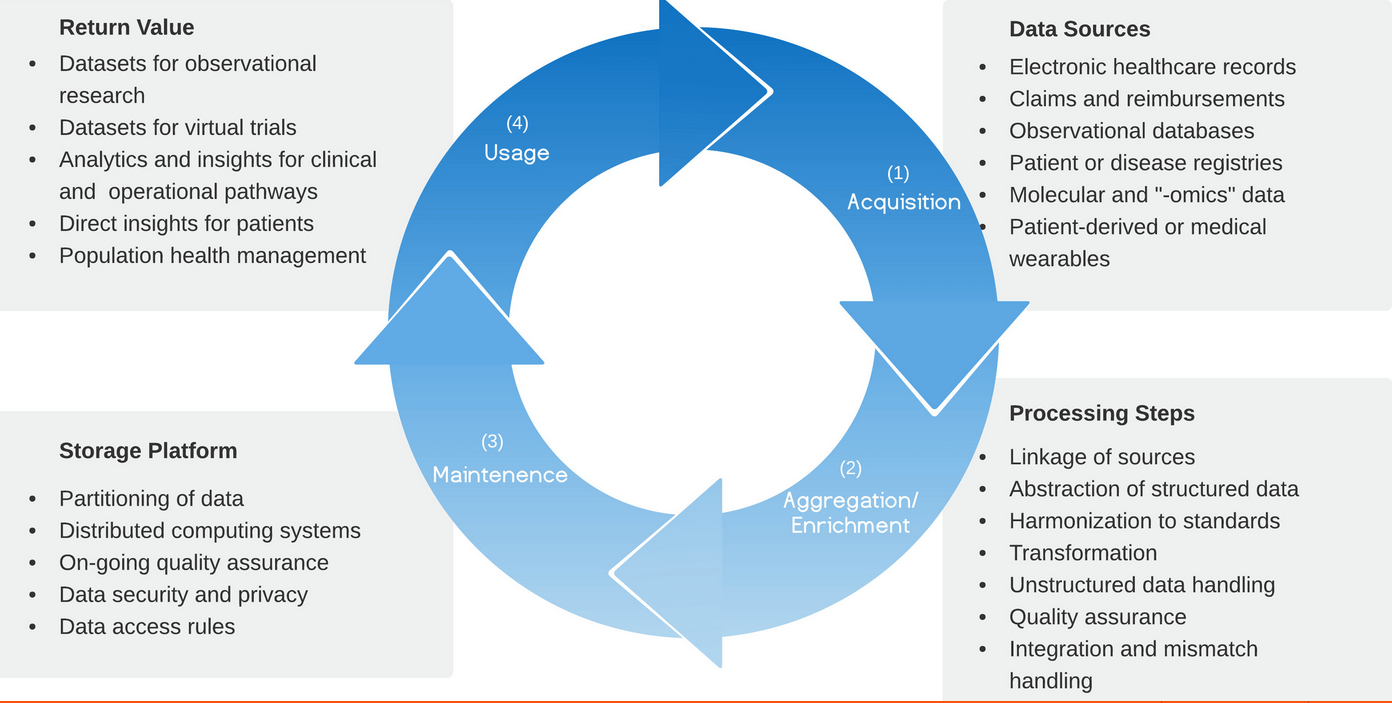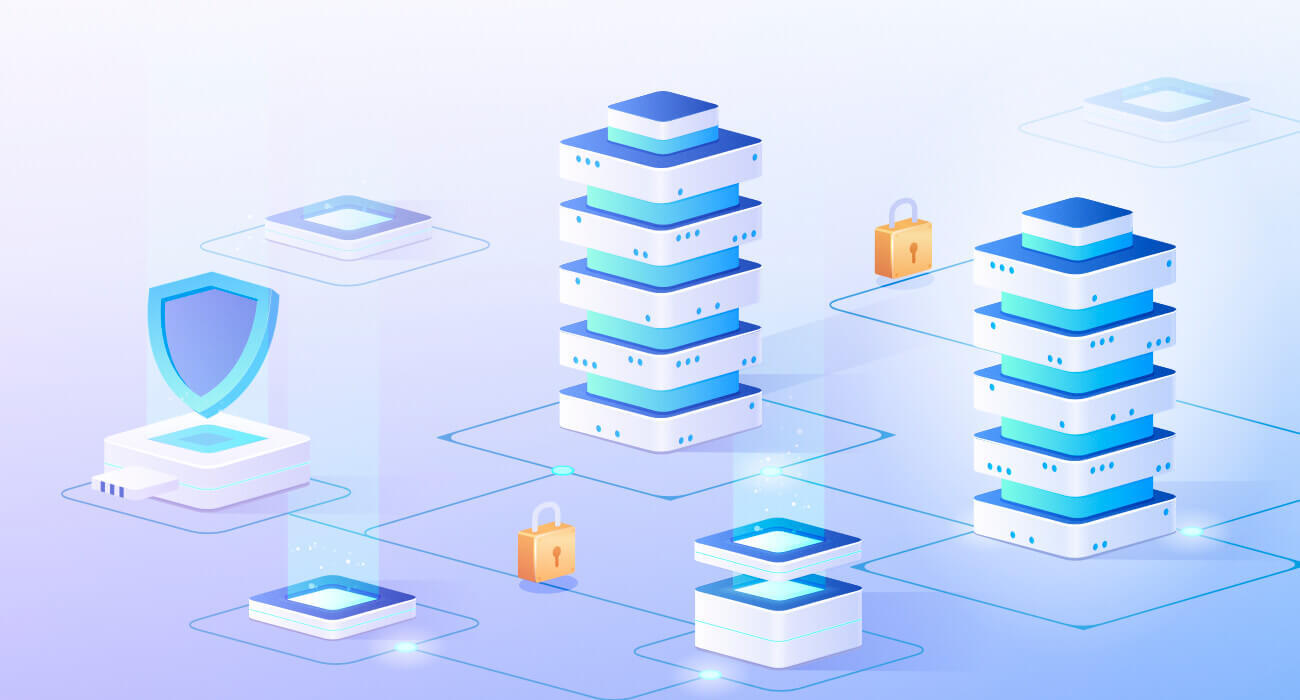While getting overwhelmed by the terminology of data lifecycle management is easy, it doesn't mean you cannot get started and successfully implement an efficient data management strategy. In fact, by incorporating a few key elements into your plan, integrating these processes, technologies, and strategies won't seem so overwhelming. Your data will be appropriately managed throughout the entire lifecycle with careful planning.
Data lifecycle management is a solution for handling the data that you collect. It is about keeping track of your data and how people access it. Data lifecycle management helps make sense of the analytics you run on your website. But what if we told you that data lifecycle management could help remove a pain point for you as a business owner?
What is Data Lifecycle Management?
Data lifecycle management is a process that involves the creation, maintenance, and deletion of data within an organization. The process is designed to ensure that the data being created is accurate and consistent.

It is a process that ensures your data is accurate and relevant. The first step of data lifecycle management is determining your data needs. The next step is to create a plan for where the data will go, how it will be used, and when it will be updated or deleted.
This may sound like a lot of work, but ensuring your company has access to up-to-date information to help make strategic decisions is vital.
Data Lifecycle Management vs. Information Lifecycle Management
DLM differs from information lifecycle management (ILM), which is more focused on the processes related to capturing, storing, and retrieving records such as contracts or policies. But DLM is part of ILM because it includes handling documents and other forms of "paper" data that must be managed within an organization's enterprise content management (ECM) system.
While information lifecycle management focuses on managing information across its entire life cycle (creation, use, storage), DLM focuses on managing data across its entire life cycle (design, use, storage). Data refers to any information that can be recorded, stored, or transmitted electronically, while information refers to a body of knowledge shared by two or more people. As a result, ILM focuses on managing the entire organization's knowledge base instead of just its data assets.
What are the Main Phases of Data Lifecycle Management?

Data lifecycle management is managing, storing, and effectively using data. It includes the following phases:
1. Data collection
This is where you decide how to collect data from your customers or users. You'll need to consider what kind of information you want to collect (for example, name, email address, age), who should manage it, and how they should do so (phone calls, surveys, or apps).
Then you'll need to ensure that this information is stored securely so that only authorized people can access it. This is the phase where your company gathers, receives, and stores data. The goal is to collect all relevant information about your customers so you can later use it for analysis and reporting purposes. Use data collection methods to compile and analyze data.
2. Data maintenance
Ensuring that your data is complete and accurate. This includes validating and cleansing existing data and providing tools for employees to report any issues they find with the quality of their datasets.
As per extensive research, AI-enabled tools and methodologies will be employed and implemented for 60% of the tasks by the year 2025.
3. Data synthesis
This phase involves identifying the different types of data created by an organization, determining how they can be classified (data segmentation), and creating a data dictionary describing each type and its specific attributes.
This phase's purpose is to ensure that all relevant information is included in the data lifecycle management process. Here multiple datasets are combined to form an integrated dataset that can be further analyzed or used in other ways, such as building predictive models or simulating virtual experiments.
4. Data usage
Data can be used for many purposes, including decision-making, compliance with regulations, research, and development. But each user has different requirements that need to be considered when designing a system that will handle this data flow between users and applications.
For example, if you're using your customer data for marketing purposes, you'll need a system that allows you to target specific customers based on their demographics. If you're using your employee payroll data for tax calculations, then there might be constraints on what kind of queries are allowed (e.g., only allowing questions based on salary bands).
5. Data publication
Once your data has been cleaned up and published online (or wherever else), it's available for use by other applications or users within your organization or external users through an application programming interface (API).
In this phase, you publish your datasets by making them available for others to use in their applications or toolsets. This includes ensuring that there are no security breaches while publishing our datasets, so they are secure enough to be used by other applications or toolsets without any issues due to security breaches or lack thereof.
6. Data storage
Next comes storing the collected data in a secure location so it can be accessed whenever authorized users need it. Some companies use cloud-based solutions to store sensitive information, while others prefer on-premise systems because they offer more control over their data security policies.
Data storage is about ensuring the data is secure and accessible when required by authorized users only. This typically involves implementing security measures such as encryption and authentication controls to ensure that unauthorized individuals don't have access to sensitive information. As per research by Gartner, half of the critical data will be migrated to cloud services by 2025.
7. Data cleaning
This involves removing duplications or erroneous entries in your database, ensuring that each person only appears once in your database, and ensuring that each entry has all required fields filled out correctly. It is often referred to as ETL (extract transform load).
It refers to the process by which raw data from multiple sources is transformed into usable information by removing duplicates and ensuring consistency across various datasets.
What are the Three Main Goals of Data Lifecycle Management (DLM)?
Data lifecycle management involves three main goals:
- Data governance - Ensuring your organization has a single source of truth for all its data. This requires having a centralized data warehouse or repository where all your data is stored so that it can be accessed by anyone who needs it.
- Data security - Protecting your company's sensitive data from unauthorized access and ensuring that only those with access rights can access it. Data security involves strict controls on database permissions, encrypting data at rest, and more.
- Data compliance - Ensuring that your organization complies with industry regulations such as GDPR and HIPAA by implementing appropriate measures such as encryption, segregation of duties, and more.
Benefits of Data Lifecycle Management
Data Lifecycle Management can be seen as an extension of IT Governance, and it aims to provide a holistic view of an organization's data assets. It provides a structured approach for managing, protecting, and using data in compliance with laws, regulations, and best practices.
The benefits of Data Lifecycle Management include:
- It ensures that companies know where their sensitive data is located at any given time. This can help prevent the loss or theft of information through unauthorized access or disclosure by employees or third parties.
- It enables organizations to meet regulatory requirements such as GDPR (General Data Protection Regulation) and HIPAA (Health Insurance Portability and Accountability Act). These regulations require companies to protect personal information from unauthorized access or misuse by employees or third parties who may want to use it for malicious purposes like identity theft or fraud.
- It helps companies comply with industry regulations like PCI DSS (Payment Card Industry Data Security Standard), SOX (Sarbanes-Oxley Act), and ISO 27001/27002 standards for protecting data.
- Reduced costs associated with managing your data. This can be achieved by reducing the amount of storage space you need and eliminating duplicated copies of the same information.
- A lack of control over where, when, and how much data is stored can lead to unnecessary hardware, software, and labor expenses. Without a plan in place, it's difficult to estimate how much money is spent on these resources — but by implementing a data lifecycle management strategy, you'll be able to monitor usage better and adjust accordingly.
Conclusion
This is a complex topic with an extensive array of factors to consider. However, if you're interested in securing data for present and future generations, data lifecycle management could be a vital tool in your arsenal. By making sure that you're thinking about data lifecycle management now, even on a small scale, you can ensure that you won't be scrambling later when the issues become too big to ignore.















Leave a Reply